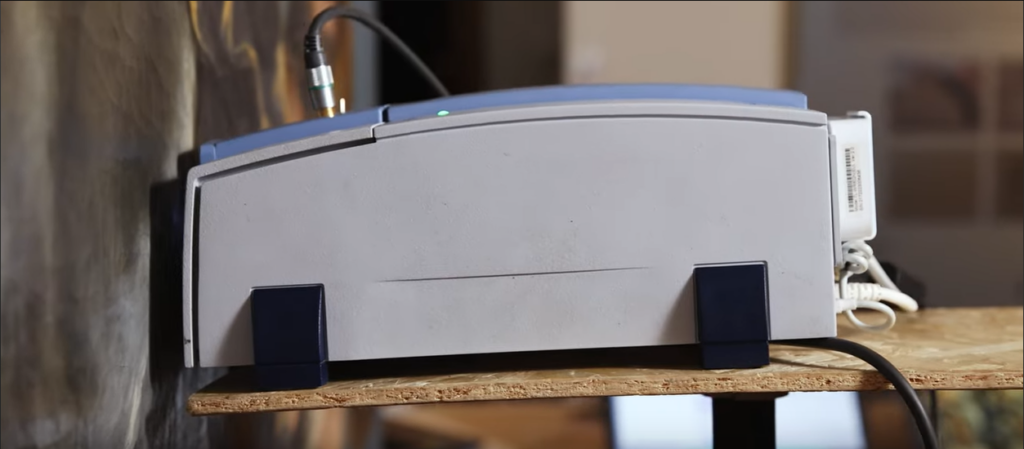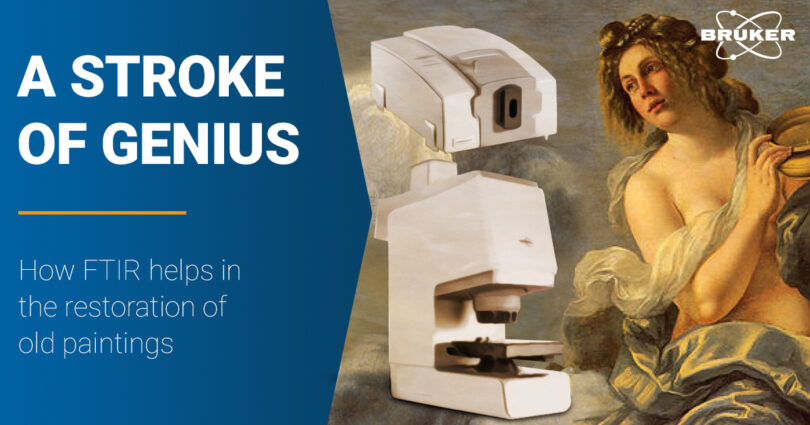FTIR is a versatile tool in art restoration, revealing original materials and modifications to preserve significant artworks.
The Inclination, created in 1616 by the remarkable Artemisia Gentileschi was among several paintings commissioned by Michelangelo Buonarroti the Younger to celebrate his granduncle THE Michelangelo.
The Inclination depicts a nude female figure lying on clouds and holding a compass, symbolizing Michelangelo’s natural talent for art. Around 1680, a descendant of Michelangelo the Younger, hired an artist to paint a blue drape and veils over the figure to cover her nudity. Thus aligning the artwork with the more conservative morals of that time (what a shame!).
Now, after centuries of hanging on the ceiling and thus being subjected to age-induced degradation the painting is undergoing restoration.

The ALPHA II – saving a damsel in distress
To let this amazing painting shine again the conservators first needed to know what materials Artemisia used in the first place. This is extremely important because it aids in preserving the artwork’s integrity and prevents damage from incompatible materials. It is also essential that the painting remains undamaged during analysis. Because of this, non- or minimum-invasive IR measurement techniques were selected such as external reflection and Attenuate Total Reflection (ATR).
This is where Bruker’s ALPHA spectrometer comes into play. ALPHA allows the restorer to quickly identify what materials were used in the original art. This rapid performance is mandatory because restorers often work under tight deadlines. Time is money, and it is essential to make paintings available to visitors again as quickly as possible. Furthermore, the ALPHA allows non-invasive analysis which is crucial in art restoration. Due to its robustness and mobility, it can be implemented right on-site.

The LUMOS II – shedding light on the past
The restoration project has also given scientists and conservators the opportunity to literally look under the lady’s skirt. They did this by using high-tech analytical techniques such as X-Ray imaging. But to fully understand the extent of the interventions on Artemisia’s original painting, researchers additionally chose FTIR again. This time however the conservators used Bruker’s LUMOS II FTIR microscope.
But why the LUMOS II? Simply put: It is able to collect more than 1,000 spectra in a single shot in just about a second. And since only small samples could be taken from the painting (less than half a millimeter) a microscope had to be used for their analysis. Moreover, the IR array detector even determines the chemical complexity of this little piece of art on micrometer level.
With the technology, the experts were able to create a stratigraphic chemical map of the various paint layers. This allowed them to identify the original layers drawn by Artemisia as well as those of the prudish censor. They were thereby able to determine which color Artemisia originally used in the covered areas and, consequently, what she was depicting (e.g. skin).
If, at one point in the future, restorers would decide to remove the “censor bars” this information would additionally help to restore the image to its original beauty.

Conclusion
In conclusion, the restoration of Artemisia Gentileschi’s The Inclination exemplifies the effective use of FTIR technology in art conservation. Bruker’s ALPHA spectrometer enabled non-invasive, on-site material analysis, ensuring the painting’s integrity was preserved throughout the process. Simultaneously, the LUMOS II FTIR microscope facilitated detailed laboratory examinations, allowing for the creation of a comprehensive stratigraphic chemical map of the paint layers. This dual approach not only uncovered the original materials used by Gentileschi but also provided critical insights into later modifications, enhancing the understanding and appreciation of this significant artwork.
If you want to know more about the restoration of old paintings have a look at our blog about FTIR investigations of paint degradation in art conservation:








